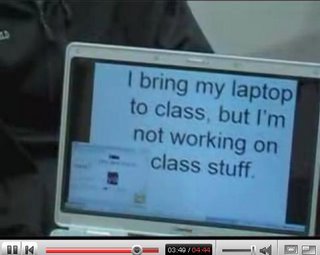My Life in the Classroom, Where Race Always Matters
By David J. Leonard

May 20, 2014
When you walk into a classroom, what’s your demeanor? Are you approachable, even casual? Or do you favor authority and formality?
Ever since Katrina Gulliver, a professor at University of New South Wales, lamented a “culture of familiarity” in the lecture hall, I’ve been reading professors’ reflections on these questions. Reflections from professors like Will Miller, who pushed back against Gulliver: “I have been known to occasionally teach in clothes that I could mow the lawn in,” he wrote, “and apparently a student or two have at some point said I was cool. That’s not my goal, however.”
I’m a casual dresser, too, but that’s not what struck me about Miller’s essay. What stood out was this line: I may be a white male, but this has nothing to do with why I am comfortable in a classroom.
There’s a lot to digest here. But let me start with this: I am a white male, and that has everything to do with why I am comfortable in a classroom, why I am respected, and how I’m read by students and others. That is my story, and the story of my career within academe.
Berkeley: Summer 1998
I still remember the excitement I felt when I taught my first class solo. No discussion sections, no grading demands from other professors: This was my syllabus, my approach, my opportunity to develop relationships with students. The course covered the civil-rights movement, and I was thrilled by the opportunity to share my passion for the untold stories of the movement.
As a white, male graduate student, I worried: Would my knowledge and academic background be enough to make students respect me as an authority on civil-rights history? But back then, I figured that my extensive reading list and my preparation were enough. Beyond that initial burst of anxiety, I gave little thought to what my whiteness meant inside the classroom.
About halfway through the class, we prepared to watch Spike Lee’s 4 Little Girls, a powerful documentary that chronicles the trauma and terror of the 16th Street Baptist Church bombing in Birmingham, Ala. Wanting the students to sit with the film, to reflect, and to emotionally connect with it, I encouraged them to bypass the standard practice of detached, academic note-taking. “Sit back,” I said, “and enjoy the film.”
Looking back, I cannot believe I said these words. But I’m not entirely surprised: My privilege needed to be checked. In my mind, I was simply reminding them to watch, listen, learn, and feel. Yet that’s not what came out of my mouth. What I said seemed like an attempt to turn a film about terror into a moment of pleasure and enjoyment.
A few weeks later, two African-American students approached me separately. They each challenged me to think about what I had said, why it was significant, and how my whiteness mattered. They were right. I was blinded by privilege and the belief that “it’s all about the material,” not even questioning how I presented that material. My distance from the history shaped how I talked about the civil-rights movements and white-supremacist violence. When I reached into my pedagogical toolbox, steeped in whiteness and my middle-class Los Angeles upbringing, I grabbed hold of “enjoy the film” with little forethought about how such an insensitive phrase might trigger emotions and anger. It was the first of many lessons on how race always matters in the classroom.
Berkeley: Spring 2002
As I approached the completion of my Ph.D., I was afforded the opportunity to teach an upper-level undergraduate ethnic-studies class with over 200 students. It was daunting. Between wrangling eight teaching assistants (many of whom were my friends), and lecturing to all those undergrads, I was apprehensive—if not scared—for much of the semester.
Over the years, I have been asked over and over again: Did the students—either the legendarily political Berkeley crew or the less-progressive students who just were taking the course for a general-education requirement—ever challenge me, question why I was teaching the class, or simply resist my pedagogical approach? Never. Happened. Even though I lectured about genocide, enslavement, mass incarceration, and persistent white supremacy, students offered little resistance.
This all changed, though, when a fellow graduate student—an African-American man—delivered a couple of guest lectures about the prison-industrial complex. After two mind-blowing and brilliant talks, I was excited to continue the conversation with the class. My students? Not so much. They lamented the guest lecturer’s “attitude.” They described him as “angry,” as “biased” and “sarcastic,” and as “different from me.” Several students seemed more interested in litigating his pedagogical choices than discussing the injustices of the American judicial system.
We (I’m indebted to one of my TA’s for her work here) refused to hold this conversation in his absence, so we brought him back into the classroom. And we pushed the class to reflect on why I was seen as an objective, fair-minded, truth-telling, and lovable “teddy bear,” whereas he was angry, biased, and more interested in a political agenda than the truths of history. The conversations that resulted from these interventions were powerful, spotlighting that race, racism, and privilege didn’t just operate outside the classroom, in history and in culture. They played a role within our learning space as well.
The wages of whiteness were paid inside and outside the classroom. I was seen as an objective authority, I realized, in part because I was a white male.





